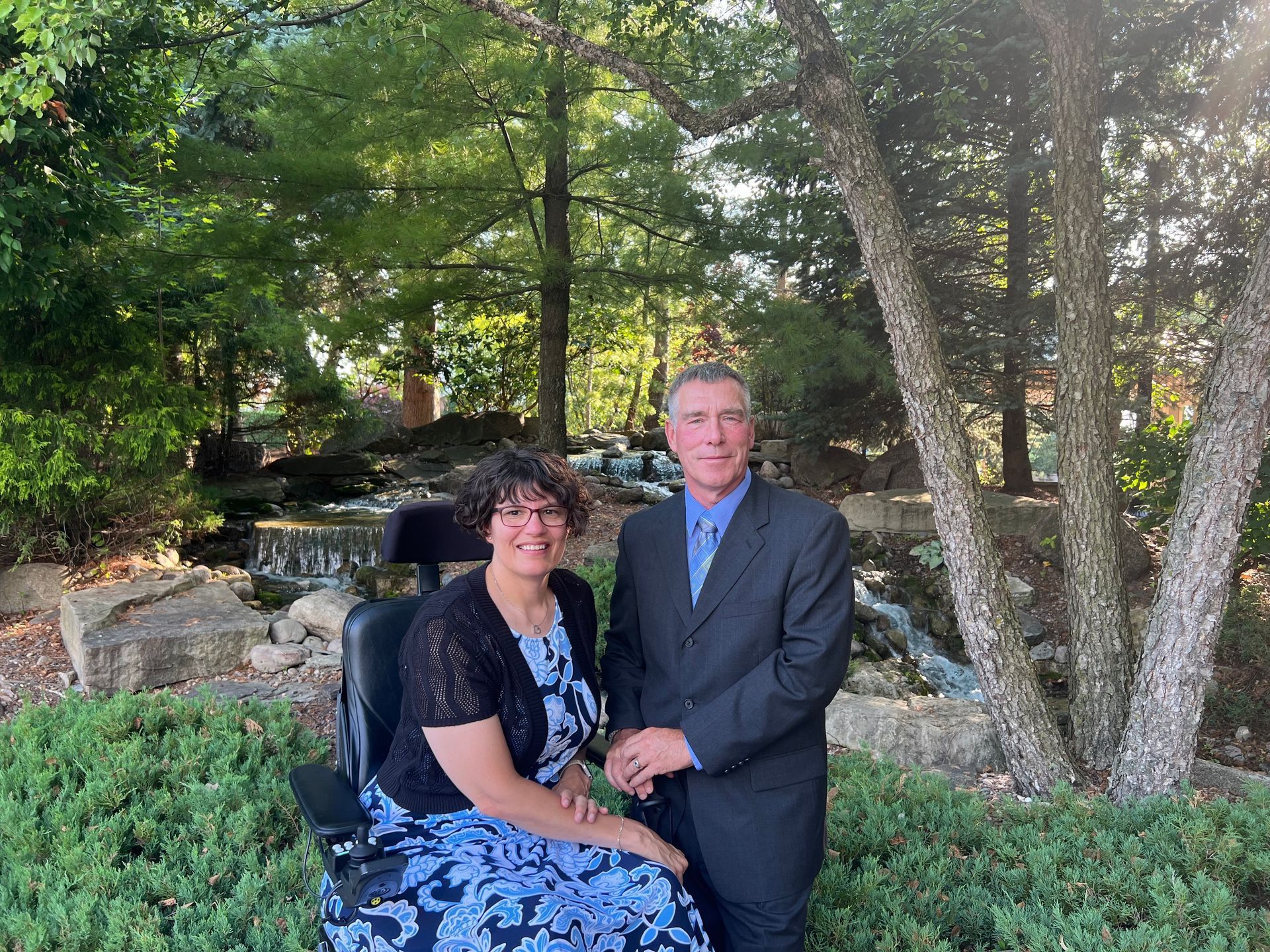In 1993, Jenni Ebert underwent a nerve conduct study - one that was painful enough to rank closely to childbirth in her memories. This confirmed that she had Charcot-Marie-Tooth disease, which years of twisted ankles and struggles with sports in middle and high school had previously indicated.
Her view of CMT 1J had not always been through a positive lens, though. When she was first diagnosed, she was apprehensive.
She said, “While I knew about CMT because other family members had it, I really didn’t know how I would be affected by the disease."
Jenni started using ankle foot orthotics the same year that she had the nerve conduct study and was officially diagnosed with CMT. A little more than a decade later, she began using a cane, which then transitioned to crutches and a manual wheelchair. In 2019, Jenni upgraded to an electric power wheelchair, which meant she needed a conversion minivan that had wheelchair lock and driving hand controls.
It was because of these mobility issues that Jenni was scared to tell her husband about CMT 1J when she first started dating him. Once she did tell him, they were able to have open and honest conversations about CMT, and his love and commitment has remained constant.
Jenni said, “Every day has not been easy, but his love and support has helped me. I know that my family will always be there for me, having the love and support of someone who chooses to be there for you is priceless.”
In addition to her husband and family, Jenni also has friends who support her.
She said, “My friends may not always fully grasp the accessible needs I require, they are very supportive and accommodating.”
In fact, when she experienced a bad fall in 2022, Jenni said that her friends constantly supported her through cards, text messages, and phone calls.
After her fall, she had to spend a year rehabilitating. The first week of her rehabilitation was spent in a hospital. Then she was transferred to her home where a portable lift that her husband was able to purchase on ebay helped move her between her bed and her wheelchair for the next six months.
Throughout this period of rehabilitation, Jenni’s family frequently showed up to support her. Her mother assisted with the lift at her house several times a day, her sister and mom had helped set up the house prior to Jenni’s return, her son lent a hand when it came to chores and small fixes, and her daughter was able to use her experience studying to become a nurse to help out.
Jenni said, “If I am in need of anything, even if it's just a phone call, I know I can reach out to both my family and friends.”
As time passed and Jenni attended therapy, she was able to regain her mobility and cease the use of the lift. She was still limited in certain ways due to CMT, though.
She said, “With my husband’s help we have always tried to adapt to ensure I am able to participate in life.”
These adaptations have included a scooter that Jenni uses when she is outside walking her dog, gardening, and visiting neighbors, folding ramps and threshold ramps that she uses to enter event locations, and an adapted camper. This all helps ensure that she is able to continue enjoying the things that she loves, such as spending time outside during warm weather, driving to see scenic sights, and assisting with the youth group at her church. Jenni also enjoys reading, spending time with family, and sewing.
Additionally, she has spent some time connecting with others that also have CMT. Jenni’s dad and some other family members have CMT 1J, and she has met people with different forms of CMT through fundraisers and social media. Jenni has also taken on a role with this foundation, which will enable her to connect with more people that have CMT 1J while also fundraising for research.
Jenni said, “I love that our form of CMT is now identifiable by a simple blood test…I am also very excited to see where further research brings us to possible treatments or cures.”

